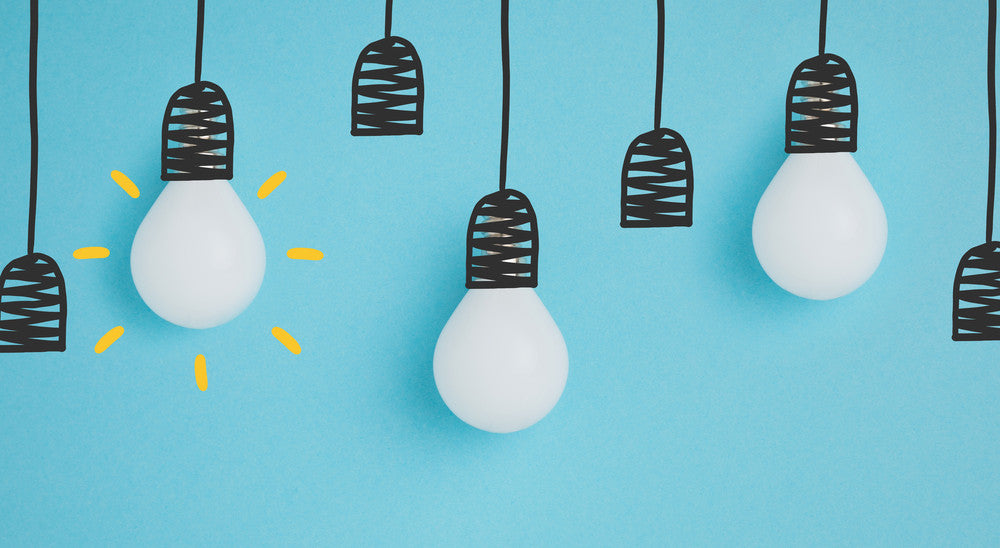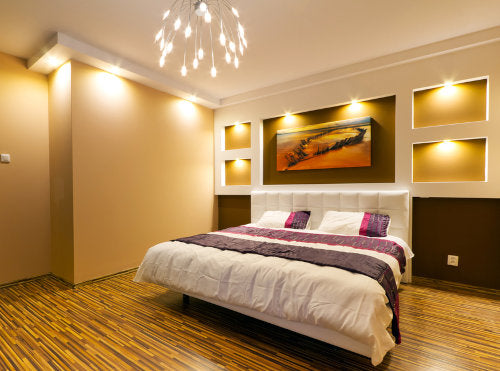
Lighting is an important part of our daily lives, and helps to make our homes and businesses better, brighter and happier places to live and work.
However with so many different types of lights available, and lots of technical terms and concepts used in the industry, choosing the right lights for your home or office can seem like a complicated and confusing process!
This is the reason why we've created our lighting glossary. Below you'll find a complete A-Z of lighting terms explained clearly and concisely to help make choosing lights an easier, less confusing and more enjoyable process.
(and remember if you have any questions or are not sure about a particular aspect of lighting please contact us. The lighting specialists at Discount Lighting have over 40 years combined industry experience and know almost everything there is know about lighting!).
Contents:
- Section 1: Different Types of Lighting
- Section 2: Different Types of Lightbulbs
- Section 3: Key Lighting Terms
Section 1: Types of Lighting

- Bankers Lights: Traditional desk lamps with a classic design, featuring a shade that directs light downwards, commonly used in offices or study areas.
- Bollard: A short, sturdy post-mounted light fixture used for outdoor lighting along pathways, driveways, or garden areas.
- Chandelier: A decorative lighting fixture with multiple branches or arms, often adorned with crystals or shades, serving as a centerpiece in formal dining areas or entryways.
- Close to Ceiling: Light fixtures mounted flush or close to the ceiling, providing general illumination for a room.
- Deck Lights: Outdoor lighting fixtures installed on or around decks or patios, enhancing safety and ambiance in outdoor living spaces.
- Downlights: Recessed light fixtures that are installed into the ceiling, providing focused illumination in a downward direction.
- DIY Batten Fix: Simple, self-installable light fixtures consisting of a batten holder and shade, commonly used in DIY lighting installations.
- Festoon: String lights, often with decorative bulbs, suspended between two points, commonly used for festive or outdoor lighting.
- Leadlight Lamps: Lamps with decorative stained glass panels, often created using the leadlight technique, offering unique and artistic lighting options
- Pendant Lights: Suspended light fixtures that hang from the ceiling, usually with a cord, chain, or rod, adding style and focused lighting to an area.
- Recessed Lighting: Light fixtures installed into the ceiling or wall, sometimes as a downlight, creating a clean and streamlined look, often used for general or task lighting.
- Sconce: Wall-mounted light fixtures providing indirect or accent lighting, available in various styles to enhance the ambiance or serve as a decorative element.
- Sensor Lights: Light fixtures equipped with motion sensors or light sensors, automatically turning on or off based on detected motion or ambient light levels.
- Spike Lights: Outdoor lighting fixtures with a spike-like base that can be easily inserted into the ground, often used to illuminate pathways, plants, or architectural features in gardens or landscapes.
- Stair Lights: Lighting fixtures specifically designed to illuminate staircases for safety and visibility.
- Task Lighting: Lighting designed to provide focused illumination for specific tasks, such as reading, cooking, or working, improving visibility and reducing eye strain.
Section 2: Different Types of Lightbulbs / Globes

- Carbon Filament LED Globes: LED light bulbs that mimic the vintage look of traditional carbon filament incandescent bulbs. They feature LED filaments arranged in a carbon-like pattern, providing a warm and nostalgic glow while offering the energy efficiency and longevity of LED technology.
- Bayonet Style: Light bulb bases featuring two pins inserted into corresponding slots, including B15 (small bayonet) and B22 (large bayonet).
- Compact Fluorescent Lamp (CFL): Energy-efficient bulbs using a gas-filled tube and phosphors to produce visible light.
- Edison Screw: Common light bulb bases with a threaded screw design, including E27 (medium screw) and E14 (candelabra screw).
- Halogen Bulb: Incandescent bulbs containing a small amount of halogen gas, offering bright, white light and longer lifespan.
- Incandescent Bulb: Traditional light bulbs producing light by heating a filament wire until it glows, emitting a warm, yellowish light.
- Light Emitting Diode (LED): LED Globes are an Energy-efficient lighting technology using a semiconductor to emit light, offering versatility, long lifespan, and various color options.
- MR16: Small-sized reflector lamps with a 16mm diameter and a bi-pin base, commonly used in track lighting and accent
Section 3: Key Lighting Terms
- Beam Angle: The angle at which light is emitted from a light source, determining the spread and direction of the light.
- Brightness: The perception of the intensity of light, typically measured in lumens.
- Color Rendering Index (CRI): A measurement of how accurately a light source renders colors in comparison to natural light, rated on a scale from 0 to 100.
- Diffuser: A translucent or frosted material used to soften and distribute light, reducing glare and creating a more uniform illumination.
- IP Rating (Ingress Protection): A rating system indicating the level of protection provided by a light fixture against the intrusion of solid particles and water.
- Kelvin & Colour Temperature: The unit Kelvin (K) is used to measure colour temperature, representing the colour appearance of light. Lower values (2700K-3500K) indicate warm, yellowish light, while higher values (5000K-6500K) represent cool, bluish light.
- LED Driver: An electronic device that regulates the power supply to LED lighting systems, ensuring consistent and efficient operation.
- Luminous Efficacy: The amount of visible light produced by a light source per unit of electrical power consumed, typically measured in lumens per watt.
- Rated Life: The average operational lifespan of a light source or fixture, indicating how long it is expected to function before replacement.
We hope you find this comprehensive lighting glossary is a valuable resource for understanding the diverse world of lighting. Exploring the various types of lighting fixtures, from pendant lights to task lighting, helps you select the right solution for any space. Key lighting terms, including colon temperature, lumens, and IP ratings, are demystified, enabling informed decisions about lighting choices. Additionally, the glossary covers different types of lightbulbs, such as Edison Screw and Bayonet Style, ensuring you are well-versed in the available options. With this knowledge, you can create well-lit environments that enhance aesthetics, functionality, and energy efficiency.
We can't wait to see how you'll use lighting to create warm, inviting and well illuminated spaces in your home or business!
